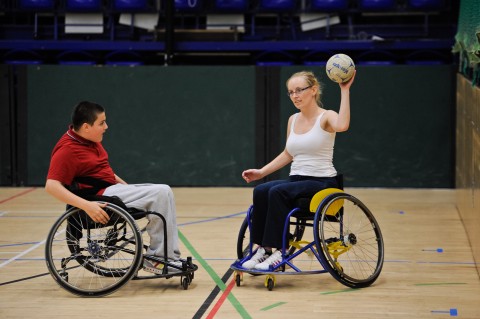Exercise is one of the best ways to improve overall health and wellbeing. Furthermore, it can help people with disabilities, too. As a person with a disability, staying physically fit is essential. Being disabled shouldn’t stop you from being healthy. Exercise is one of the best ways to keep physically fit and mentally alert and to reduce stress.
Meanwhile, there are many advantages of exercise for people with disabilities. In this article, you’ll learn five benefits of exercising for people with disabilities.
-
Improves Overall Health
One of the most important benefits of exercise for people with disabilities is improving their overall health. Exercise helps promote good blood circulation. Also, it can help prevent blood clotting and damage to the heart by keeping it healthy.
In addition, exercise helps fight against muscle weakness and joint pain, both common problems for people with disabilities. It can also help you maintain a healthy weight. This is essential for anyone with a disability because it’ll help prevent other health problems such as high blood pressure and diabetes.
Regular exercise also helps improve mood. To learn more about it, you can click here to understand the importance of exercise for people with disabilities. Organizations like Active Ability can help you learn more about the benefits of exercise for your particular condition.
-
Increases Strength
Exercise has many benefits for people with disabilities, but one of the most important is increased strength. When you exercise, your muscles get stronger and better able to perform the tasks they need to do. This can make it easier to perform daily activities like getting dressed or using the bathroom.
Moreover, exercise helps people with disabilities develop a sense of physical control over their bodies. This is especially true for those who suffer from mental illnesses such as depression or anxiety. Exercising can help them feel like they have some control over their own lives again.
-
Improves Focus And Concentration
One of the benefits of exercise is improved focus and concentration. This can be a challenge for people with disabilities, as they may have trouble focusing on tasks or concentrating on just one thing at a time. Exercise can help with this by enhancing blood flow to the brain, which helps you stay focused and concentrate better.
Significantly, physical activity can improve your concentration by reducing mental tension and allowing your mind to relax. This helps you focus more effectively on the task at hand. When you exercise, your brain releases endorphins, which can help you feel more at ease and relaxed. On the other hand, aerobic exercises can increase your heart rate and improve your breathing.
Meanwhile, exercise can also help improve your ability to focus on things by giving you an outlet for anxiety or stress. Furthermore, it gives you something productive to do with your time instead of feeling like you’re just sitting around waiting for someone else to take care of things.
-
Improves Posture And Balance
Another significant benefit of exercise for people with disabilities is that it can help improve your posture, as well as your balance. People who have problems walking or have mobility issues can benefit from exercise since it can strengthen muscles and improve cardiovascular health.
As you exercise, you’re training your muscles to work together, which helps improve your posture and balance. You’ll also be working out the muscles used when sitting or standing up straight. As you get stronger, you’ll be able to improve your posture and balance, which will also improve your self-esteem.
On the other hand, if you have a disability that causes you to sit or stand hunched over, you can try searching for exercises that can help you improve your posture.
-
Rehabilitation
Exercise is an integral part of rehabilitation for people with disabilities. By doing regular exercise, you’ll get fitter and healthier. Additionally, it can help you perform your everyday activities more efficiently. Consequently, your heart and lungs will work better, and you’ll be less likely to get infections or illnesses if you’re fit and healthy.
Meanwhile, exercise is a great way to rehabilitate people with disabilities. It can help them increase their strength, flexibility, and endurance—improving their ability to perform everyday tasks. Exercise can also help people with disabilities feel better about themselves and their bodies by helping them build their confidence and self-esteem.
Conclusion
For anyone who has a disability, it can be challenging to find the time and energy for exercise. But if you make it a priority in your life, you’ll soon realize that the benefits are endless. Without a doubt, the advantages presented in this article are worth considering for anyone with disabilities.
























